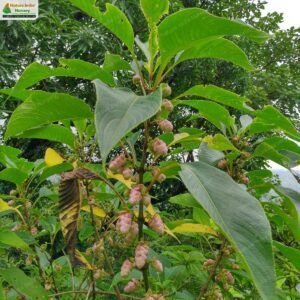Strobilanthes callosa, also known as Karvi in Marathi, is a large shrub native to the low-lying hills of the Western Ghats in India. This plant is notable for its unique flowering cycle, which occurs once every eight years. It is a robust, perennial shrub that can attain heights ranging from 6 to 20 feet. The plant produces strobiliform spikes, which can be either densely or laxly cymose. The flowers are typically purple and bloom between July and September.
Karvi is renowned for its unique plietesial flowering cycle, where the entire population blooms synchronously once every eight years. This mass flowering event is followed by seed setting and subsequent plant senescence. The mass flowering of Karvi plays a crucial role in the ecosystem, providing a significant food source for various insects and animals. The plant’s lifecycle supports biodiversity, particularly during its flowering phase, attracting pollinators and herbivores.
This plant is not only a botanical curiosity but also a vital part of the ecosystem, providing habitat and food for various insects, including caterpillars and snails and also birds.
Habitat
Planting and Care
-
Light: Prefers partial shade to full sun, with indirect sunlight or filtered light being ideal.
-
Soil: Requires well-drained soil that retains moisture without becoming waterlogged.
-
Watering: Regular watering is necessary, especially during the growing season, to keep the soil consistently moist but not soggy.
-
Maintenance: Occasional pruning is beneficial to remove dead or damaged stems and maintain the plant’s appearance.
Additional Information
-
Medicinal Properties: The plant has been used in traditional medicine for its various properties.
-
Ornamental Use: Strobilanthes callosa is cultivated for its unique appearance and is often used in gardens and landscapes for its ornamental value.

















